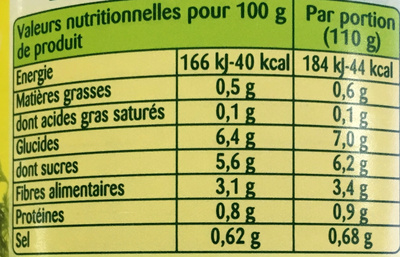Carottes râpées - Bonduelle - 270 g
This product page is not complete. You can help to complete it by editing it and adding more data from the photos we have, or by taking more photos using the app for Android or iPhone/iPad. Thank you!
×
Some of the data for this product has been provided directly by the manufacturer Bonduelle.
Barcode: 3083681017687 (EAN / EAN-13)
Common name: Carottes râpées
Quantity: 270 g
Packaging: Canned
Brands: Bonduelle
Categories: Plant-based foods and beverages, Plant-based foods, Fruits and vegetables based foods, Canned foods, Vegetables based foods, Canned plant-based foods, Vegetables, Canned vegetables, Prepared vegetables, Carrots, Canned carrots, Grated carrots
Labels, certifications, awards: fr:Carottes Origine France
Origin of ingredients: France
Manufacturing or processing places: France
Countries where sold: France
Matching with your preferences
Environment
Carbon footprint
Packaging
Transportation
Other information
Conservation conditions: A conserver à température ambiante
Customer service: Service consommateurs Bonduelle, Service consommateurs Bonduelle BP 30173 Villeneuve d'Ascq
Report a problem
Data sources
The manufacturer Bonduelle uses CodeOnline Food to automatically transmit data and photos for its products.
Manufacturers can use the Open Food Facts free plaform for producers to access and complete this data, and to obtain reports, analysis and product improvements opportunities (e.g. better Nutri-Score).
Product added on by tacite
Last edit of product page on by aleene.
Product page also edited by asmoth, desan, org-bonduelle, packbot, segundo.










